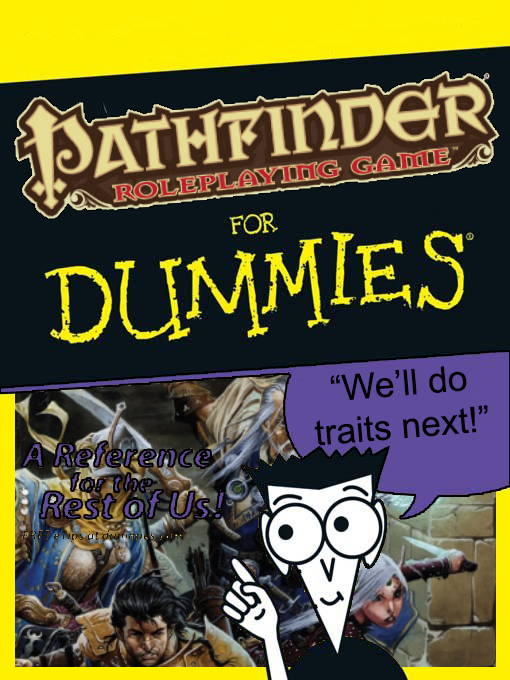When working on a large project, it’s likely that you’ll be teamed up with others to provide content. Sometimes this can feel like a double-edged sword as your writing style and methods might not mesh with the rest of the group. In general, it’s a wonderfully valuable experience as long as you use some helpful tools.
Collaborative Design
On any creative endeavor it’s important to start by setting boundaries and assigning responsibilities. This will help everyone understand exactly where their responsibilities lie, what they’re expected to deliver, and when. This is especially important in a large-scale adventure where NPCs are likely to re-occur and you want to know who’s doing the main design of the NPC and where else in the adventure that NPC might show up. You might introduce that plucky alchemist in the first part of the adventure, but they might feature heavily in the second part written by a different author. It’s important to determine who determines the NPC’s design? The author writing the section where they first show up or the author writing the section they’re heavily featured in? For published works, your developer is likely going to have that included as part of the outline. If they don’t, then ask them about it and let them make the judgement call.
Share you concepts with other designers and authors. For adventures, this means general plot ideas or other mechanics you wanted to add to your adventure. If you were thinking that an intrigue heavy section with a murder mystery sounded great, but one or more other authors thought the same thing, you could end up with a series of adventures that feel too samey. Feel free to talk to each other and share outlines so that the adventure can stay on theme, but not feel like you’re revisiting the same elements over and over.
If you have something experimental or a story element that you’re not sure if it will land properly, then share it with the other authors. Getting a new perspective is always valuable, and can help you avoid pitfalls you didn’t even know were there. The TTRPG industry is a pretty friendly place, and we’re all looking to help each other out. That said, if you’re giving feedback to someone else, keep it supportive, constructive, and positive. For example, “I like your use of an outsider in this combat, but I’m confused at the choice for an oni. Does this tie into other Eastern Fantasy elements I’m not aware of? That really captured my interest.”
Communication
Ok, so we’re going to open lines of communication. But how? Find out what social media and productivity platforms your group is already familiar with, and try and stick to something they already know. If a collaborator has to figure out new software just to talk to you, it’s likely to be less successful. That’s one more place to check for messages, learn how to set alerts, and use all the various functions. Some of the most common ones are: Slack, Bandcamp, Discord, email chains, and other instant messaging programs.
Slack
This is a great platform for keeping multiple conversations going by creating different channels. You also don’t have to allow everyone in every channel, so you can keep certain conversations private, such as marketing and distribution discussions. Each channel also lets you turn an individual message into the head of a conversation thread within the channel. This lets side-conversations branch out without spamming the channel. It supports private conversations, which is great.
One of the most underused features is keyword searching. You can tell your Slack project which keywords you want to be on the lookout for, and it will pre-search for those terms for you, keep an index, and highlight the terms when they’re on screen. If you’re in charge of all the leshy on a project, you can ensure Slack keeps track of anywhere people are talking about leshy so you can find it easily and not miss a conversation.
The file support is a little lacking, in that you can send and receive files, but they stay in the channel you posted them into. This can make going back and finding them later a chore. This works as a great discussion board if your main shared file repositories are held in a different system.
Bandcamp
I’ve seem lots of Bandcamp out there recently. This platform works on an individual post system, sort of like a message board. It can keep conversations consolidated while still providing some good collaborations. The default is constant and daily alerts, so it can be a little spammy towards your email inbox, especially close to a deadline.
The file management system is decent. It puts all the files into one big blob in addition to letting you attach them to messages. This can be a little messy if there are huge amounts of files, but a solid file naming system should keep things straight (“v1, v2, v2.1” etc).
While not my favorite platform, it gets the job done and has a pretty fast and accurate search feature, if you’re looking for all the information on the new glorious fountain of death spell, for example.
Discord
More and more I’ve seen private Discord servers pop up for individual projects. This is a really nice way to make informal spaces and connections, due to the nature of the program. That said, the ability to add multiple text channels, voice channels, and include detailed channel security makes this a very flexible option.
For a project with lots of authors, or a wide variety of subjects, you could set a channel for each chapter, each new game mechanic, each plot thread, etc. Divide it up however makes sense for your project and keep the conversations on track. I’d recommend a #general or #misc channel for chit-chat and off-topic conversations.
The file sharing is lacking as it’s all in-line file posting. Use another file sharing platform if you need to collaborate on individual files.
Instant Messaging and Email Chains
These methods are only any good for very small projects and/or projects with only 2 or 3 people working on them. Otherwise, they can get out of hand far too quickly.
Shared files
There are two great file sharing services I’d recommend: Dropbox and Google Drive. Which one I’d recommend depends entirely on the content and format of the files you need to share.
Dropbox
Perfect for sharing files that can sync to your computer and be in any format. Supports folders, subfolders, long file names, live sync protocols, and a sync program that can grab an entire Dropbox account or only parts of it. The downside is that space is very limited unless you pay for very expensive accounts. Though they’ve made strides to support online collaboration on a specific file, they’re not really there yet.
Google Drive
This platform is great for file format agnostic situations. When you just need a word processor and it doesn’t have to be MS Word or some other format, then Google Drive is great. You can throw all the Docs and Sheets files you want in there and have live real-time collaboration and writing, as well as in-line comments and real-time conversations. Each document has a chat feature you can utilize while multiple people are in the same document.
The downside is when it comes to navigating large documents or if you have very stringent Style requirements. In those cases, it might be best to break the document up into chapters or sections and plan on setting styles and format once you have a completed or nearly completed document.






